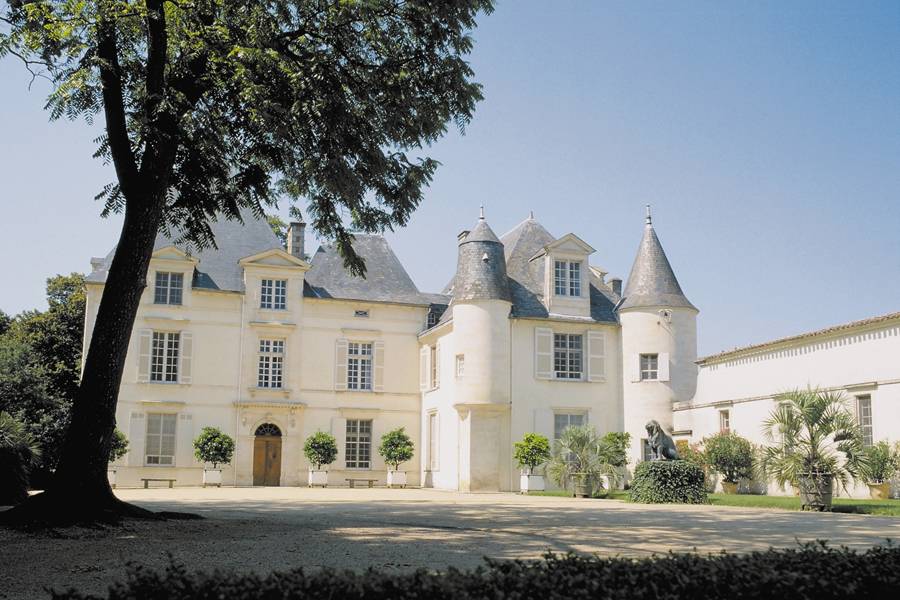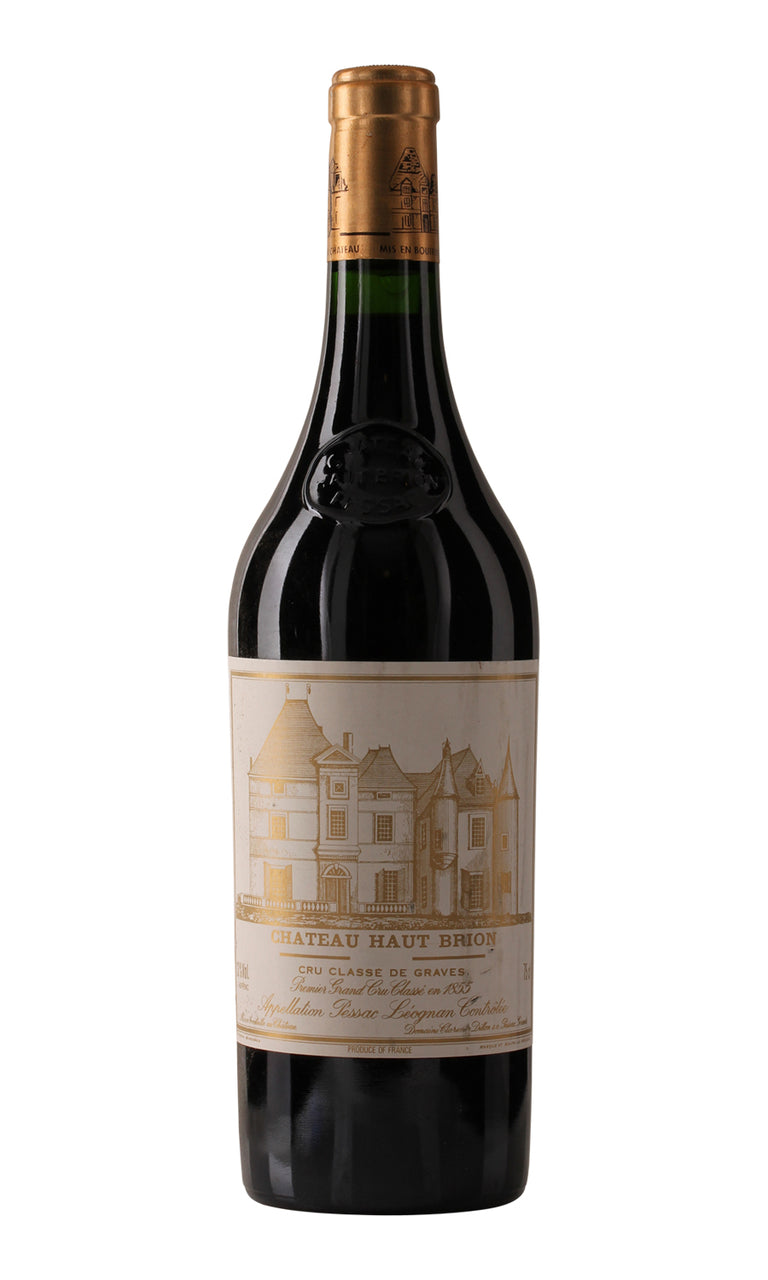- Colour Red
- Producer Château Haut-Brion
- Region Pessac-Léognan
- Drinking 2020 - 2035
- Case size 6x75cl
- Available Now
2013 - Ch Haut Brion 1er Cru Pessac-Léognan - 6x75cl
- Colour Red
- Producer Château Haut-Brion
- Region Pessac-Léognan
- Drinking 2020 - 2035
- Case size 6x75cl
- Available Now
Select pricing type
Need help? Call +44 (0)20 7793 7900 or email wine@goedhuiswaddesdon.com.
-
Goedhuis, April 2014, Score: 91-93
With a deep opaque colour, this is a fuller and more muscular style of wine to the La Mission. There is lots of restrained class and the natural masculinity and structure masks some of the fruit. Not as graceful as La Mission, but this has fine power and weight. One of the best of the wines we tasted during the week.
-
Neal Martin, October 2016, Score: 92
The 2013 Haut Brion has perhaps a little more complexity on the nose compared to the 2013 La Mission Haut-Brion at the moment. There is more depth and plenty of attractive fruit: cranberry, wild strawberry, hickory and a scintilla of scorched earth that becomes quite peaty with time. It is well defined and shows impressive focus. The palate is very well balanced with tensile tannin, a keen thread of acidity, lively in the mouth with more weight and presence than La Mission, though perhaps without quite the same precision at the moment. It still cuts away just a little short on the finish, but this is a decent Haut-Brion that may pull ahead of its "sibling" with bottle age. 2020-2035
-
Neal Martin, April 2014, Score: 89-91
The 2013 Château Haut-Brion is a blend of 50% Merlot, 4.5% Cabernet Franc and 45.5% Cabernet Sauvignon picked at the same time as La Mission, with 13.10% alcohol. I made two visits to the estate at the beginning and end of my visit. The bouquet is stubborn and reticent at this stage, expressing little in the way of fruit and refusing to really deliver the complexity of a First Growth. The palate is medium-bodied and a little fleshier than the La Mission thought that acidity level is noticeable, rendering this sharp and very linear. This feels somehow autumnal and leafy despite its nascence, but at least there is decent length. As a huge admirer of Jean-Philippe Delmas' work at the estate, but on this occasion there is something almost workmanlike about it, an absence of gravitas and flair that the La Mission appears to muster.
-
Robert Parker, August 2014, Score: 90-92
Its bigger sibling, the 2013 Haut-Brion, is a blend of 50% Merlot, 45% Cabernet Sauvignon and 5% Cabernet Franc. This classic effort tastes like a Haut-Brion, a major accomplishment in this vintage. Slightly fuller, richer and more complete than its nearby rival, La Mission Haut-Brion, it exhibits a deep ruby/purple color as well as hints of scorched earth, barbecue, charcoal, red and black currant, Asian plum sauce and spice notes. Fine-grained tannins are present, but well-integrated, and the acidity is not excessive. The result is a relatively plush, mid-weight, stylish, potentially complex Haut-Brion to drink over the next 15+ years.
-
Decanter, April 2014, Score: 94
Superb colour, lovely earthy black fruit spices nose, wonderful texture of velvety fruit in the La Tâche style, with tannins for the future, undeniable depth and class. Drink: 2018-2035
-
Matthew Jukes, April 2014, Score: 18++
Only 28hl/ha instead of 44hl/ha in a normal vintage. There were only 5000 cases of Haut-Brion and 3000 cases of La Mission Haut-Brion made - these are the smallest yields since 1991 (and its brutal frost). You have to go back to 1969 to find a vintage with this much rain. Taste-wise, the nose is incredibly attractive, with hedgerow fruit (unusually in this vintage the Merlot shines through), woodsmoke, tobacco and bark. The palate is concentrated, classical, as always, balanced and polished with serious length, too. The wine is tannic though. Prince Robert of Luxembourg thinks it is a forward H-B, but I sense a hard edge here which will need to soften. As this noble creation can live for 70 years, perhaps he means it will drink well in 25 years!
-
Jancis Robinson, April 2014, Score: 16.5
Closed nose, with better fruit concentration on the palate. Fine, dusty tannins with great persistence on the finish. Rather light body. Dry and savoury, but hardly brimming with potential. An early-drinking style. As Steven Spurrier says, beautifully polished. (RH)
-
Tim Atkin, May 2014, Score: 93
Haut-Brion was the least distinguished of the First Growths in 2013, at least for me, partly because it seemed so hard, acidic and unyielding. There’s good structure here, with fine tannins and minerally acidity, but is there enough fruit sweetness? 2020-26
Producer
Château Haut-Brion
Arguably the oldest recognised Bordeaux grand cru, Haut Brion has been owned by the American Dillon family since 1935. The Château was an early moderniser - the first estate to implement steel vats in 1961 - and over the years, their incredible investments have re-established the inherent quality of this property, enabling it to emerge as possibly the most consistent first growth since the 1980s. Situated in Pessac-Léognan ...Read more
Arguably the oldest recognised Bordeaux grand cru, Haut Brion has been owned by the American Dillon family since 1935. The Château was an early moderniser - the first estate to implement steel vats in 1961 - and over the years, their incredible investments have re-established the inherent quality of this property, enabling it to emerge as possibly the most consistent first growth since the 1980s. Situated in Pessac-Léognan in Graves, the estate is the only classified growth located outside the Médoc. Château Haut Brion has the most Merlot and the most Cabernet Franc of any of the First Growths and the second wine is Le Clarence de Haut-Brion, known as Ch Bahans Haut Brion prior to 2007.Read less

Region
Pessac-Léognan
Stretching from the rather unglamorous southern suburbs of Bordeaux, for 50 km along the left bank of the river Garonne, lies Graves. Named for its gravelly soil, a relic of Ice Age glaciers, this is the birthplace of claret, despatched from the Middle Ages onwards from the nearby quayside to England in vast quantities. It can feel as though Bordeaux is just about red wines, but some sensational white wines are produced in this area from a blend of sauvignon blanc, Semillon and, occasionally, muscadelle grapes, often fermented and aged in barrel. In particular, Domaine de Chevalier is renowned for its superbly complex whites, which continue to develop in bottle over decades. A premium appellation, Pessac-Leognan, was created in 1987 for the most prestigious terroirs within Graves. These are soils with exceptional drainage, made up of gravel terraces built up in layers over many millennia, and consequently thrive in mediocre vintages but are less likely to perform well in hotter years. These wines were appraised and graded in their own classification system in 1953 and updated in 1959, but, like the 1855 classification system, this should be regarded with caution and the wines must absolutely be assessed on their own current merits.




